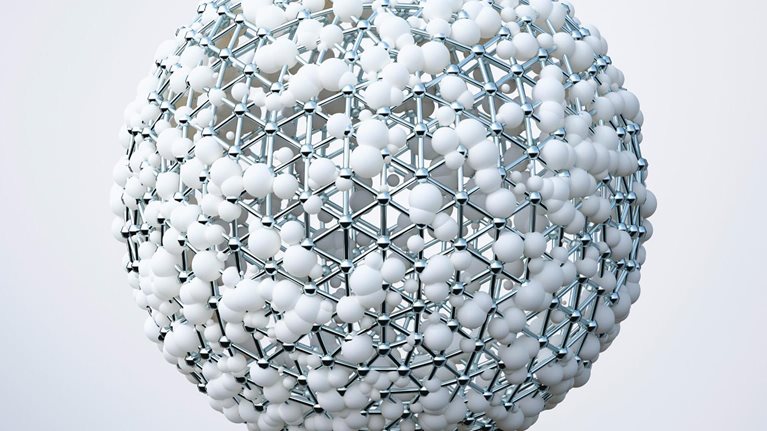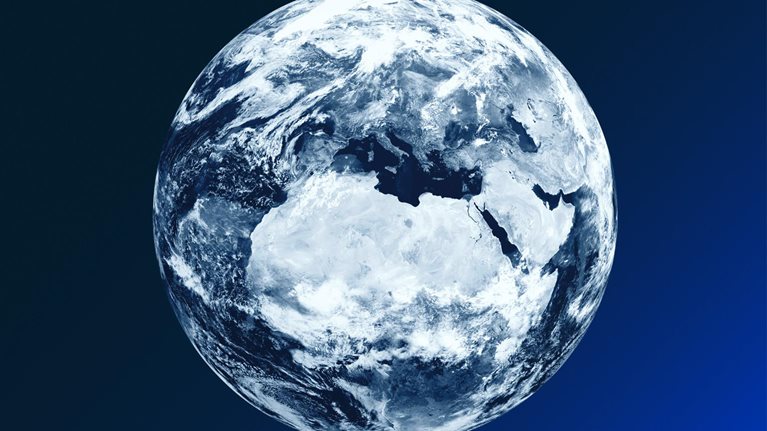Last year, the COVID-19 pandemic and subsequent economic crisis brought unprecedented challenges to the petrochemicals industry. Early in the pandemic, quarantine measures, lockdowns, and economic uncertainties led to widespread project delays, and the last few months of the year were marked by extraordinary supply and freight disruptions.
All things considered, the industry weathered the storm remarkably well, with relatively resilient volumes and profits. This article details petrochemical companies’ revenues and profits throughout 2020—and how they were affected by fluctuating oil prices. Our analysis focuses on demand growth in consumer packaging, as driven by increased dependency on cleaning and hygiene products and personal protective equipment, and the costs and margins of key hydrocarbons, including ethylene, polyethylene (PE), and polypropylene (PP).
Careful study of how the industry handled value creation during this time—including investments, supply, demand, margins, and pricing—can inform a series of industry implications for 2021.
An industry snapshot: A year of resilience
Overall, demand growth in petrochemicals in 2020 was driven by increased demand for consumer staples, such as household goods and personal products, and a drop in durables, such as automotive products and appliances. After the initial shocks of COVID-19, volume bounced back in the second half of 2020. The global ethylene cost curve flattened as the price of oil decreased, reducing feedstock advantages in regions such as North America and the Middle East. Furthermore, quarantine measures and concerns over market uncertainties led to widespread project delays.
In the fourth quarter, supply and freight disruptions increased differences in regional prices. As an example, North America saw additional supply constraints, resulting from maintenance and unplanned outages, which led to price spikes for PE and PP. However, as the price of oil continues to increase and the cost curve becomes steeper, regional cost advantages may return. Similarly, volume growth rates are expected to return to levels of projected growth based on historical trends and likely be less differentiated across types of chemicals and different regions. And low to medium utilization is expected in the olefins value chain, as planned capacity comes online.
Sustainability and recycling momentum has also accelerated, garnering increasing levels of company commitment and support from government initiatives. For example, as of January 2021, the European Council imposed a levy on unrecycled packaging waste, and several large chemical companies have announced the use of recycled plastic resin.
Would you like to learn more about our Chemicals Practice?
The year in review: Recovery led by demand for key hydrocarbons
Revenues and profits in the broader chemical industry recovered to pre-COVID-19 levels during the third and fourth quarters of 2020. For their part, petrochemical companies continued to produce amid the economic downturn. As an example, one multinational chemical company with total assets of $26 billion reported a 1 percent increase in year-over-year production volume in 2020.
Industry revenue was largely tied to fluctuations in the price of oil: Brent crude prices decreased from $50 per barrel in the first quarter to $30 per barrel in the second quarter. As a result, petrochemical companies showed a broad revenue decrease in the second quarter followed by recovery in the third and fourth quarters. Along with the price of oil, earnings before interest, taxes, depreciation, and amortization (EBITDA) broadly declined in the second quarter in addition to pandemic-caused margin contraction from lower demand. As an example, low oil prices resulted in the global cost curve for ethylene and PE flattening in the second quarter (Exhibit 1). Subsequently, PE prices decreased with marginal cash costs for producers, and the smaller oil-to-gas price ratio reduced cost advantages in North America and the Middle East.

All that said, most companies showed a quick recovery to pre-COVID-19 levels in the third and fourth quarters. Petrochemical companies have been striving to preserve cash to address the uncertainties of COVID-19. In the United States, several companies cut back on spending or slowed projects—for example, Formosa Petrochemical indefinitely delayed its Louisiana cracker. This is less pronounced in Asia, however, as only minor delays due to quarantine measures were observed and there was little to no tempering of long-term projects.
Differentiated demand growth
Demand growth differentiated in 2020 depended on end-market shocks and regional recovery schemes. Even so, demand recovery accelerated in all regions by the end of the year.
End markets in 2020 experienced varying degrees of demand shocks (Exhibit 2). As the largest demand pool for petrochemical products, consumer packaged goods remained strong with a range of increases across end-market indexes. In addition, in-home or e-commerce consumption as well as drastically increased demand for personal hygiene and cleaning products boosted overall demand in packaging.

By contrast, industries such as durables, construction, and automotive saw a demand downturn due to COVID-19-related shutdowns. Because the chemicals industry has such high exposure to consumer and packaging, it saw strong demand growth, especially with regards to PE and PP, which are widely used in food packaging and household goods. Furthermore, demand growth of polyethylene terephthalate (PET) in packaging was offset by lower demand for textiles, and demand declined for polymers commonly used in construction and automotive, such as polyvinyl chloride (PVC), polyurethane (PU), and styrene-butadiene rubber (SBR).
There was high regional variance in demand as well, as China and several other countries in Asia effectively controlled the outbreak of COVID-19 in the first half of 2020 and quickly resumed economic growth. Although other regions lagged behind, end-market and regional indexes were trending up in the second half of the year, leading to the overall recovery of petrochemical demand.
Key hydrocarbons: Ethylene, polyethylene, and polypropylene
Although the ethylene cost curve flattened as the price of oil decreased, reducing regional cost advantages, the “stickiness” of PE prices—or their inability to change quickly—allowed for relatively stable integrated margins. This increased integration has primarily benefited Western Europe (compared with cracker products only), as margins have shifted toward PE (Exhibit 3).

North America’s ethane cost advantage was reduced, likely a result of the oil-to-gas price gap closing in the second quarter, but quickly recovered as PE prices picked up in the third quarter. In the second half of the year, value captured from ethylene increased to the same ratio as in 2019. In Northeast Asia, integrated margins remained stable when the price of oil decreased, and value distribution was consistent with previous years when value was accrued in the ethylene step. In Western Europe, integrated margins remained high as more value was captured in the PE step than had been in previous years.
PE and PP prices showed higher regional differentials at the end of year, driven by freight and regional-production constraints. However, this dynamic should resolve once operations return to normal (supply issues were due to maintenance, outages, and a freeze in United States). Furthermore, there are no structural changes in the industry and no governments are limiting trade.
For much of the past five years, Western Europe and North America have maintained premium prices over Asia for both PE and PP. As an example, over the course of the year North American PP prices were higher than Chinese prices by approximately $300 per metric ton (Exhibit 4).

This trend continued through the majority of 2020. Beginning in the fourth quarter, scheduled maintenance and operational issues limited PE and PP production on the US Gulf Coast. At the same time, there were constraints in vessel availability for international trade. For example, physical distancing requirements limited international shipping, with many vessels docked in the United States as a result of Christmastime imports. This means that vessels were limited in Asia and Europe. As a result, prices have “regionalized,” where PP prices in North America are significantly above prices in Asia. In February of this year the situation became even more strained with the Texas freeze forcing more plant shutdowns. While those constraints are not fundamental in nature, they have contributed to continued volatility and scarcity that has benefited producers that are able to operate.
Implications for petrochemical companies in 2021
As the price of oil increases to more than $60 per barrel (Brent) and GDP continues to recover after the initial shocks of COVID-19, petrochemical revenues will become less volatile, making incredible drops, such as those seen in 2020, increasingly unlikely. On this point, regional cost advantages will resume as cost curves become steeper, and the steady recovery of indexes are expected across regions and end markets, supporting a more even recovery of volume across all types of chemicals.
While some bans on single-use plastic packaging were lifted during the pandemic for hygiene concerns, the acceleration of sustainability and recycling is expected to continue, as we see more commitment from consumer-packaged-goods and chemical companies as well as government pushes, such as the EU levy on unrecycled plastic packaging. However, a new wave of capacity is expected to come online in 2021 and beyond.
Integrated margins for PE or PP may compress for marginal producers, primarily in Asia. More than nine million tonnes per annum additional ethylene capacity is coming online in 2021, outpacing the expected demand growth. Regarding PE and PP, regional price differences may once again become consistent with the past as the disruptions in production and freight are resolved.
The world has changed dramatically in the past 12 months, and many industries were forced to adapt. The petrochemicals industry was no exception. Petrochemical producers have played a major role in helping society with the challenges of the pandemic. As an industry, it has transitioned into 2021 strongly, and we are seeing strong profitability. Petrochemical players should use the current good times to get ready for a new and exciting future, one that combines the power of petrochemical products and solutions within a business context. This vision entails producers that embrace a sustainability agenda, including climate change mitigation, to help further transition to a more circular model for plastics.


